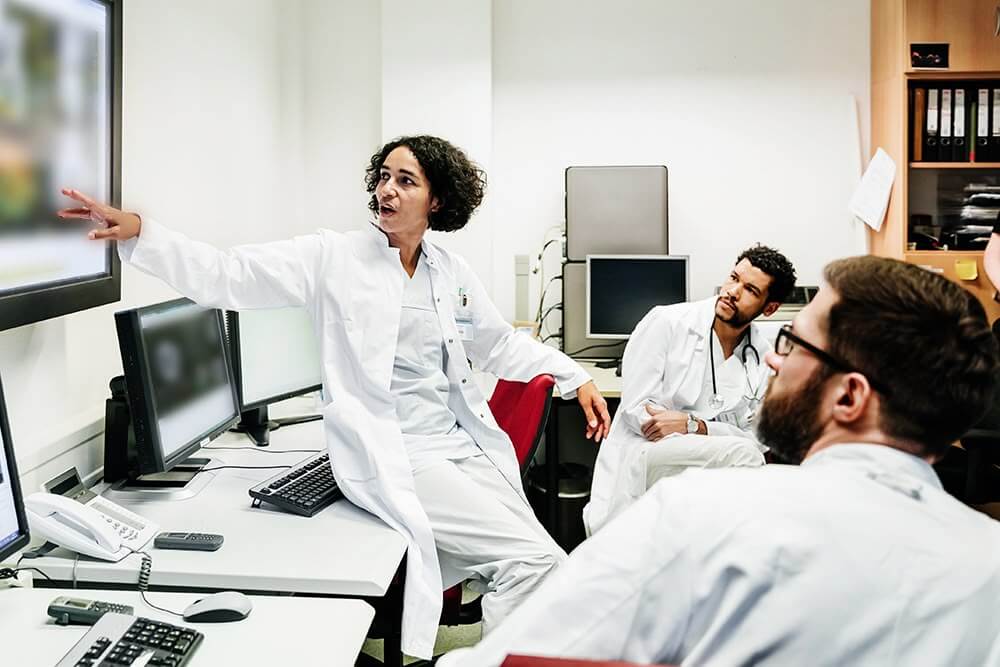
Pete Polverini, vice president for Cook Medical’s Interventional MRI (iMRI) division, discusses Cook’s groundbreaking partnership with Siemens Healthineers.

Since 1963, Cook Medical has helped advance interventional medicine, collaborating with interventional radiologists to bring ideas to life. The promise of precise, real-time MR can be traced back to our introduction of MRI-compatible needles over 30 years ago.
Our long-standing research relationship with Siemens Healthineers has evolved into a strategic commercial partnership aimed at setting a new standard for interventional medicine
Pete Polverini, vice president for Cook Medical’s Interventional MRI (iMRI) division, discusses Cook’s groundbreaking partnership with Siemens Healthineers.

This collaboration combines the power of Siemens Healthineers real-time magnetic resonance imaging with Cook Medical’s deep interventional procedure expertise, along with new medical devices developed by Cook specifically for the MRI environment.
Together, the companies are creating the Interventional MRI (iMRI) Suite*, the first integrated, ionising-radiation-free solution intended to transform how you diagnose, plan, and perform minimally invasive procedures.

Interventional MRI (iMRI) represents a transformative leap, a next-generation approach that holds the promise of high-precision, radiation-free intervention. Cook Medical is investing in iMRI as part of our commitment to advancing the possibilities available to you with image-guided procedures.
We envision a future in which iMRI is the standard for interventional medicine—an environment in which patients can receive more timely answers thanks to advanced treatment capabilities and can benefit from enhanced procedures using the latest product innovations.
By combining real-time MRI imaging with minimally invasive procedures, iMRI provides excellent soft-tissue visualisation and rapid, precise targeting of difficult lesions, all without ionising radiation.

Providing clear visualisation of subtle and small lesions to support early detection and accurate targeting

Supporting precise interventions by allowing clinicians to adjust in the moment, improving accuracy and clinical confidence

Eliminating exposure to ionising radiation for both patients and healthcare professionals

Opening the door to advanced imaging-based procedures for more patients, including those who were underserved by existing modalities
For years, MRI has provided top-level visibility for diagnostics, yet its use for interventional practice has been held back by technological and logistical challenges. That’s changing. With compatible tools, advancements in imaging software, and procedural planning, Cook is helping pave the way for a new era in intervention.
‘People have been trying to do [iMRI] for a long time, and we’ll talk about why we seem to be really gaining ground now, but our goal is to expand the number of patients or the number of conditions that make the point of intervention earlier than it has been. We’re not thinking that, “Wow, this is just going to empty out the CT scanners or empty out the ultrasound machines.” We all know that there are so many patients that need to be treated, but if we can now start providing treatments for things that, in the past, we could see in MR, but then really couldn’t make any kind of intervention in that environment, I think we’re going to just add to the overall care of patients.’ John Kaufman, MD, MS
Vice President, Chief Medical Officer, Cook MedicalListen to the full podcast: iMRI: bridging research and reality

At its core, iMRI isn’t just about imaging; it’s about patient care. The precision and clarity of MRI guidance gives clinicians the ability to diagnose and treat conditions with greater confidence.
By enabling interventions that were previously considered high risk with imaging modalities, iMRI has the potential to redefine treatment timelines and alleviate the emotional and clinical burden of uncertainty.

Despite its potential, iMRI implementation can seem daunting. Procedural workflows, equipment compatibility, and training requirements have historically posed real challenges. That’s why Cook is not just focused on product innovation; we’re also focused on execution.
Our team is developing complete and scalable solutions and partnerships that can help healthcare systems adopt this technology more seamlessly over time.

Making iMRI a reality requires close collaboration across multiple interventional specialties, including radiology, oncology, urology, pain management, and others. That’s why Cook’s approach is rooted in partnerships with physicians, health systems, and the broader medical community.
The iMRI division at Cook is designed to support and connect these efforts. We’re actively engaging with clinical leaders and researchers who share the belief that iMRI can unlock a new standard of care. This is a collective effort to bring clarity, confidence, and added safety to the next generation of procedures.
The journey to iMRI adoption is just beginning. As we work toward this future, we invite innovators, clinicians, and decision makers to follow our progress and shape what’s ahead.